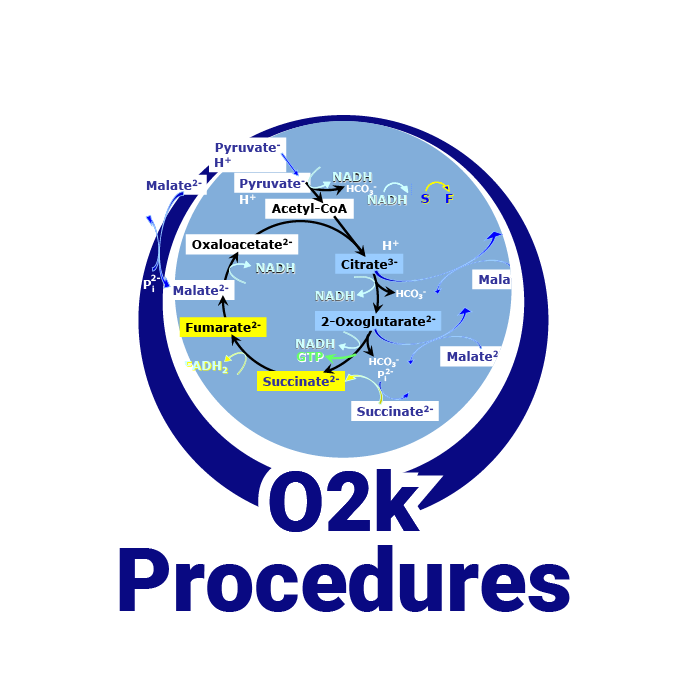Difference between revisions of "Zero current"
| Line 1: | Line 1: | ||
{{Technical support}} | |||
Each [[polarographic oxygen sensor]] has a certain zero current, i.e. a current that flows even at an oxygen concentration of zero. This current is taken into account by the [[zero calibration]]. The zero current is recorded as a gain dependent voltage and visible during zero calibration or at the end of a [[sensor test]] if the [[raw signal]] is observed. This voltage at zero oxygen can be expressed as % of the [[raw signal at air saturation]]. While new sensors have a zero voltage of below 1% of the voltage at air saturation (for the same gain), used senors may have higher zero currents, up to ca 5% of voltage at air saturation without negative consequences, provided the zero current is stable. The stability of the zero current can be assessed by keeping track of calibration values using the "O2k-Calibration-list.xls" template. This template and the calibration procedure can be found at [http://www.oroboros.at/index.php?id=o2k-o2calibration [MiPNet12.08]]. | Each [[polarographic oxygen sensor]] has a certain zero current, i.e. a current that flows even at an oxygen concentration of zero. This current is taken into account by the [[zero calibration]]. The zero current is recorded as a gain dependent voltage and visible during zero calibration or at the end of a [[sensor test]] if the [[raw signal]] is observed. This voltage at zero oxygen can be expressed as % of the [[raw signal at air saturation]]. While new sensors have a zero voltage of below 1% of the voltage at air saturation (for the same gain), used senors may have higher zero currents, up to ca 5% of voltage at air saturation without negative consequences, provided the zero current is stable. The stability of the zero current can be assessed by keeping track of calibration values using the "O2k-Calibration-list.xls" template. This template and the calibration procedure can be found at [http://www.oroboros.at/index.php?id=o2k-o2calibration [MiPNet12.08]]. | ||
A high or unstable zero current is usually caused either by the [[POS]], by the [[POS connector]] or by a bad connection between those two parts. Cleaning and applying [[contact oil]] to the gold pin and thread connecting the POS head and the POS connector will frequently solve the problem. Otherwise, the problem has to be localized by [[switching components]]. | A high or unstable zero current is usually caused either by the [[POS]], by the [[POS connector]] or by a bad connection between those two parts. Cleaning and applying [[contact oil]] to the gold pin and thread connecting the POS head and the POS connector will frequently solve the problem. Otherwise, the problem has to be localized by [[switching components]]. | ||
| Line 7: | Line 10: | ||
{{#set:Technical service=O2 sensor| Technical service=POS connector}} | {{#set:Technical service=O2 sensor| Technical service=POS connector}} | ||
Revision as of 11:21, 11 May 2015
 |
Zero current |
MitoPedia O2k and high-resolution respirometry:
O2k-Open Support
Each polarographic oxygen sensor has a certain zero current, i.e. a current that flows even at an oxygen concentration of zero. This current is taken into account by the zero calibration. The zero current is recorded as a gain dependent voltage and visible during zero calibration or at the end of a sensor test if the raw signal is observed. This voltage at zero oxygen can be expressed as % of the raw signal at air saturation. While new sensors have a zero voltage of below 1% of the voltage at air saturation (for the same gain), used senors may have higher zero currents, up to ca 5% of voltage at air saturation without negative consequences, provided the zero current is stable. The stability of the zero current can be assessed by keeping track of calibration values using the "O2k-Calibration-list.xls" template. This template and the calibration procedure can be found at [MiPNet12.08].
A high or unstable zero current is usually caused either by the POS, by the POS connector or by a bad connection between those two parts. Cleaning and applying contact oil to the gold pin and thread connecting the POS head and the POS connector will frequently solve the problem. Otherwise, the problem has to be localized by switching components.
If the problem is located on the POS head an intensive sensor service, should be applied at least two times. If this does not help the sensor probable has to be replaced.
If the problem is located at the POS connector cleaning the connection as described above should be tried again. If the problem was decreased but not solved by cleaning and applying contact oil, the cleaning process may have to be repeated several times. If cleaning the connector does not help the POS connector may have to be replaced.




